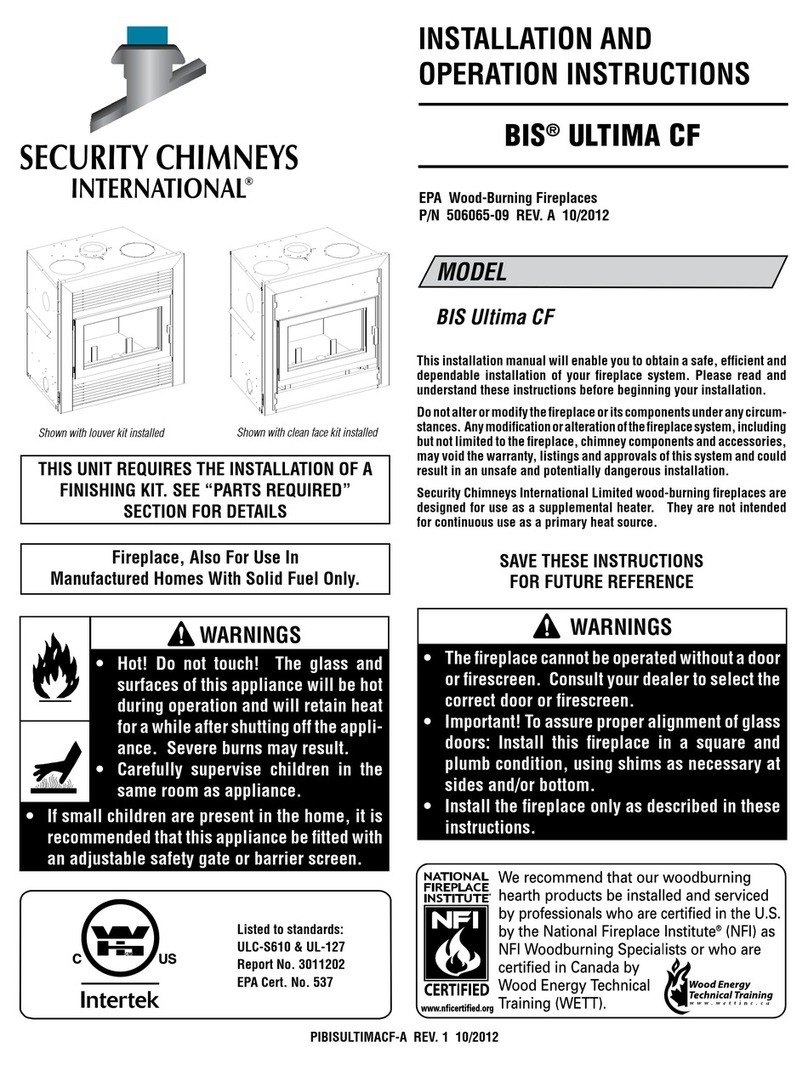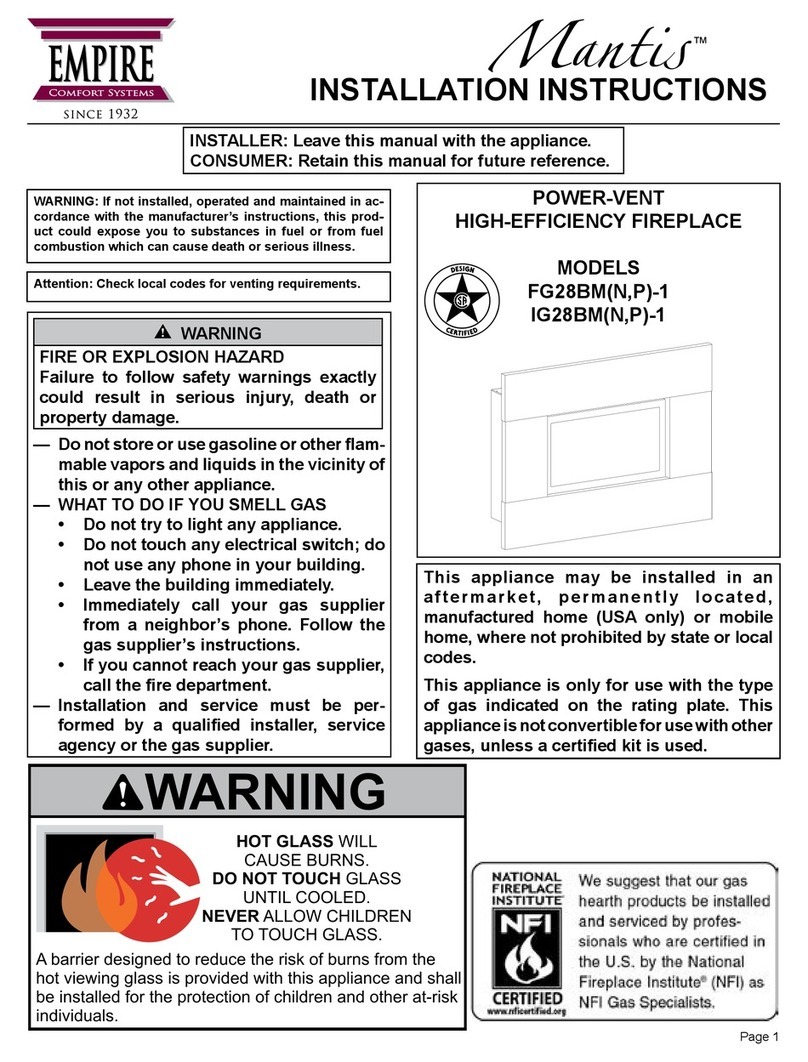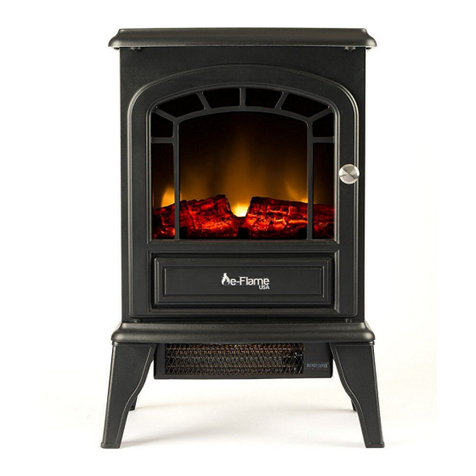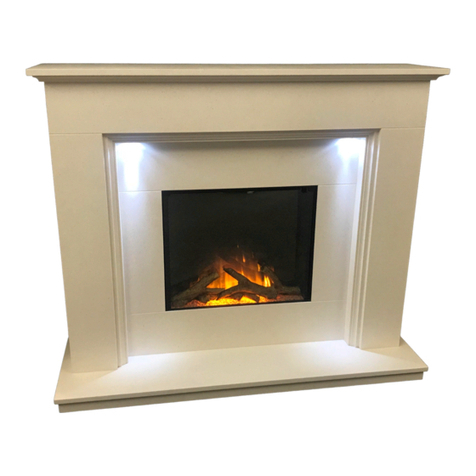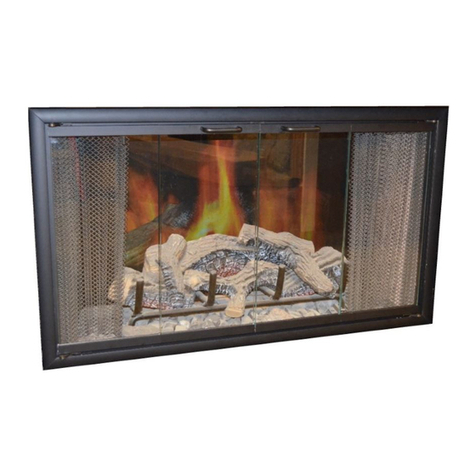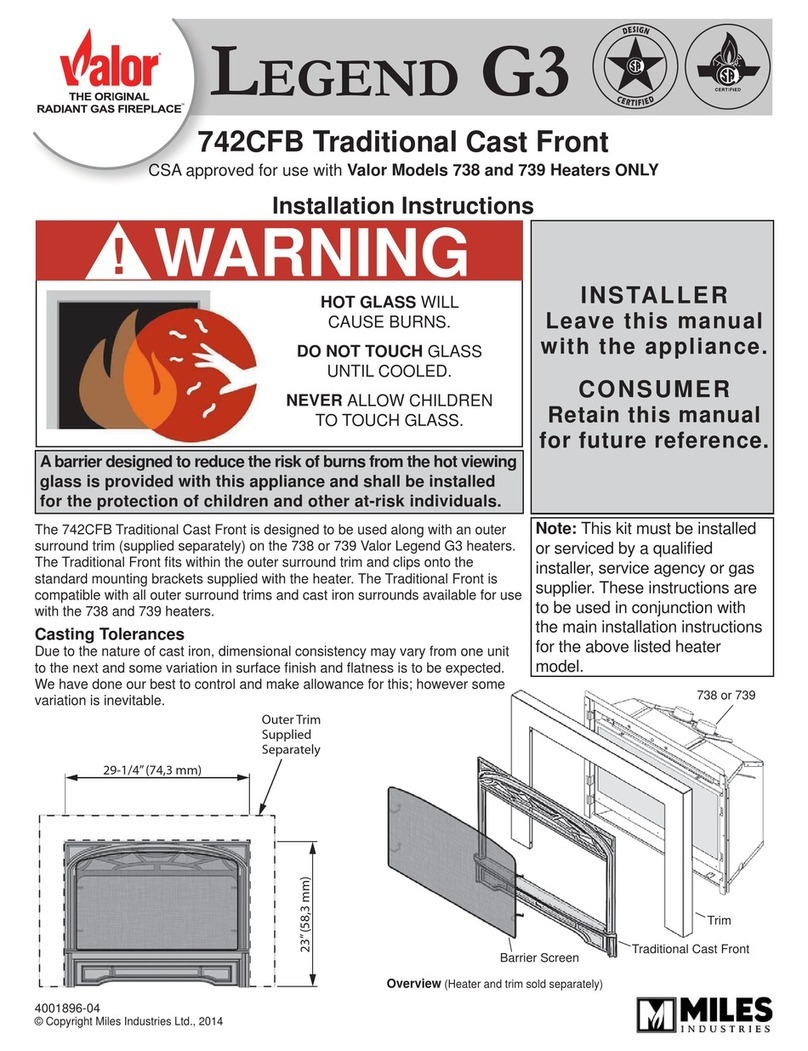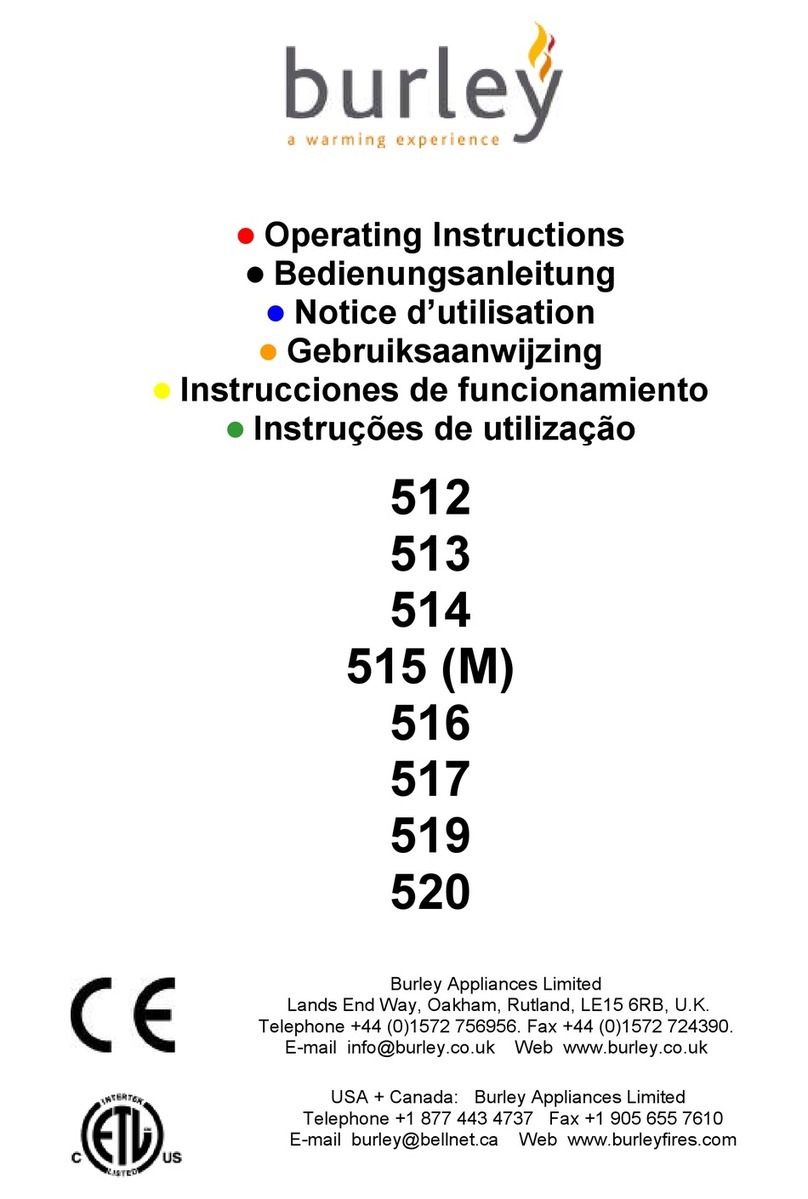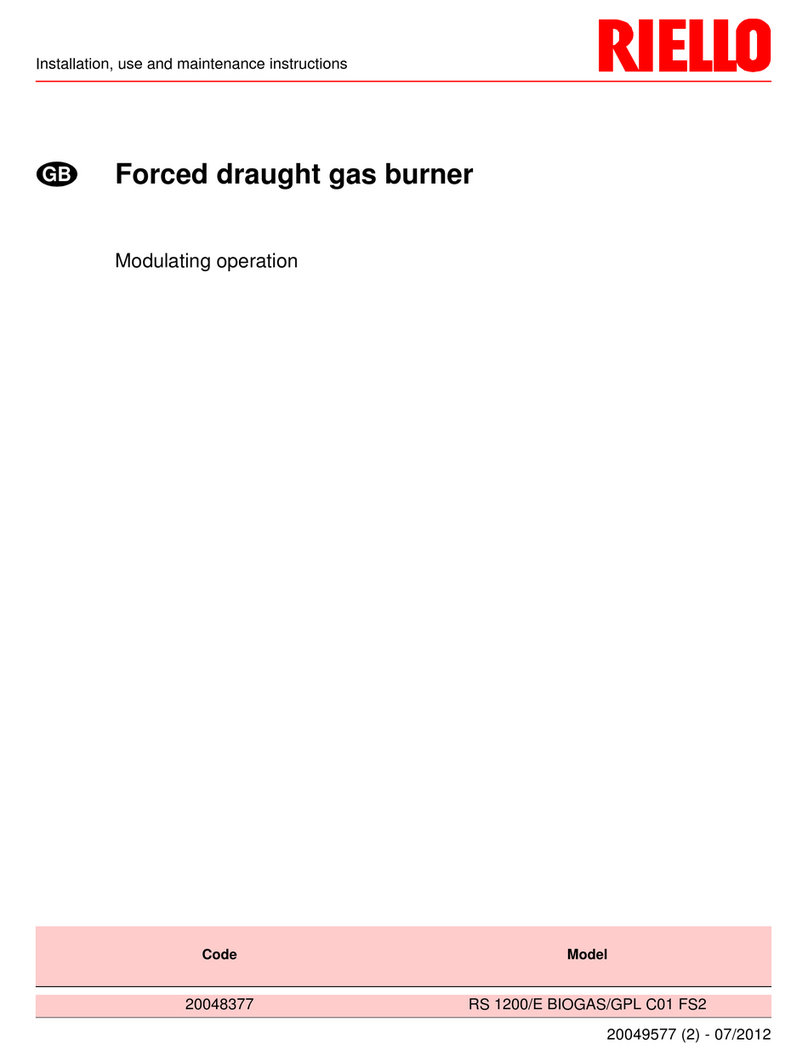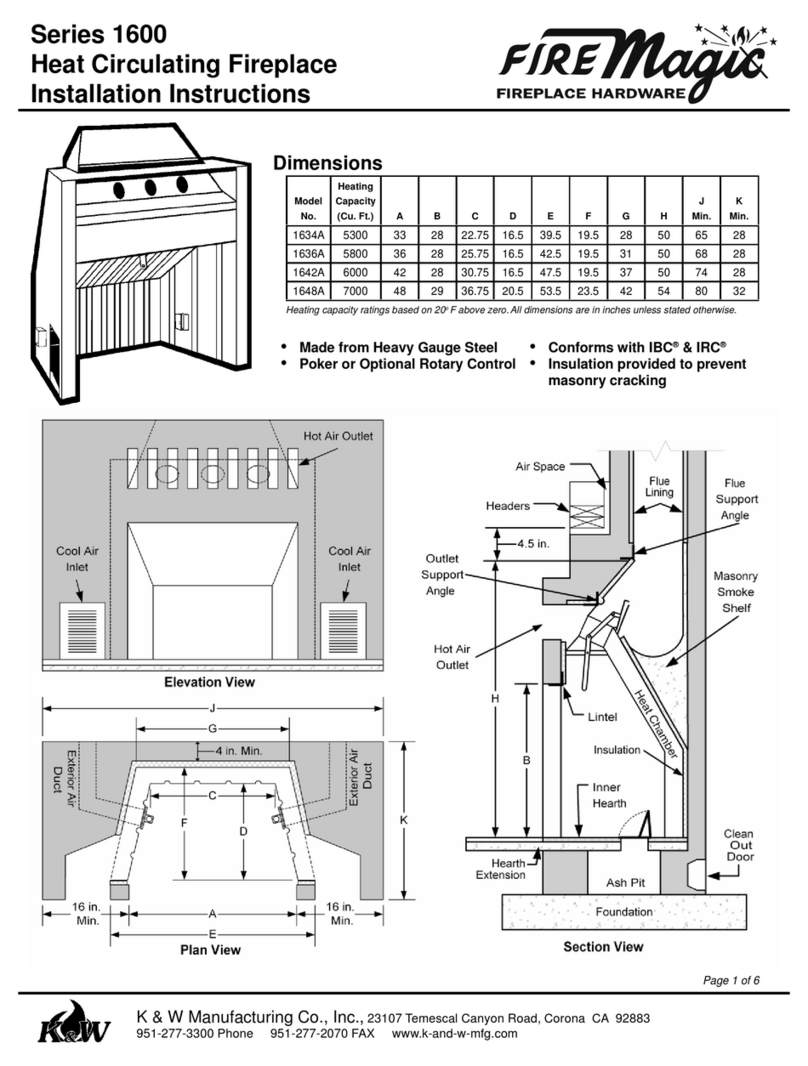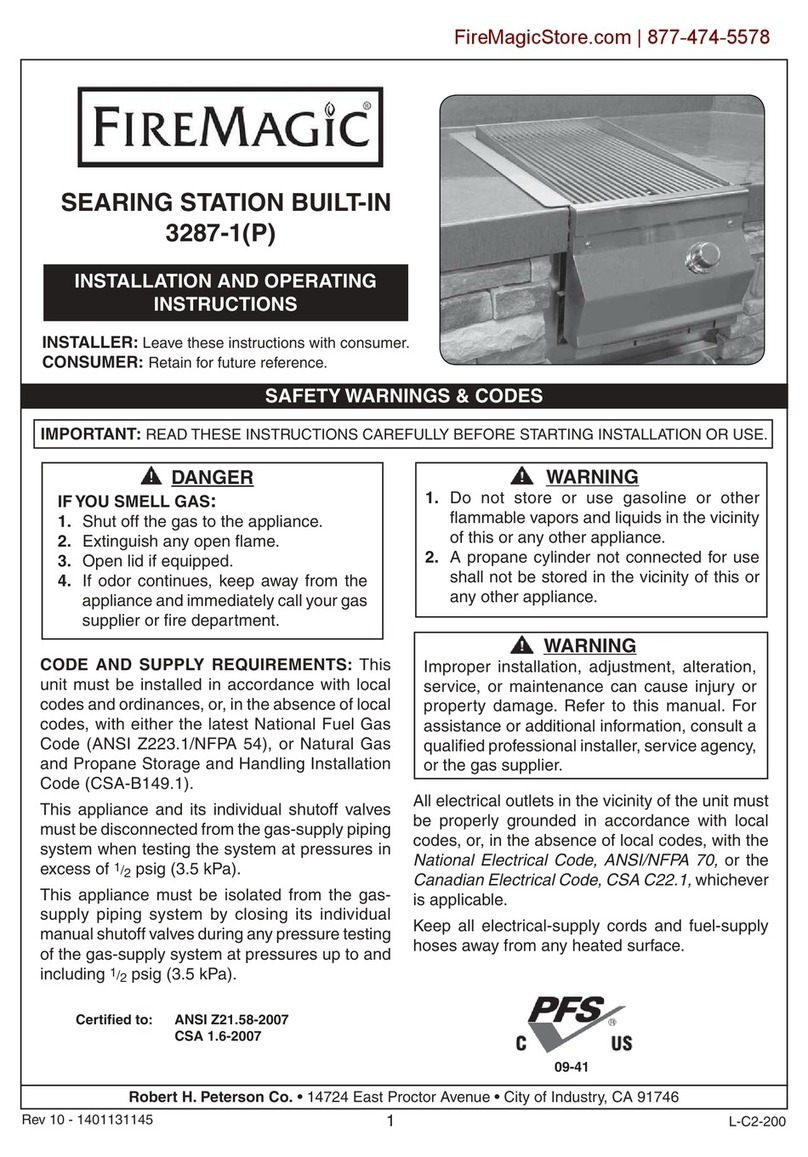
K & W Manufacturing Co., Inc.,23107 Temescal Canyon Road, Corona CA 92883
951-277-3300 Phone 951-277-2070 FAX www.k-and-w-mfg.com
Series 1000
Heat Circulating Fireplace
Installation Instructions
Page 5 of 6
Construction Details
Fire Magic Circulator:
Set the Fire Magic unit on the firebrick without mortar or other material underneath. Completely cover the unit with the
insulation furnished.Athin mixture of mortar brushed on the unit will hold insulation in place. This insulation material is
important. It provides an expansion layer between the metal of the circulator and the masonry, and helps prevent cracking.
WARNING: This insulation material contains fiberglass wool. It may cause irritation to skin, eyes, and respiratory
tract. Avoid contact with eyes and skin. Protect yourself by wearing long sleeved, loose fitting clothing, gloves and
eye protection when handling and applying material. (Do not tape sleeves or pants at wrists or ankles.) As an extra
precaution, you may choose to wear a disposable dust respirator at all times. Wash with soap and warm water after
handling. Wash work clothes separately and afterwards wipe out washer.
Laying of Masonry:
Lay masonry around and to the top of the unit. (See typical construction details on page 1). The masonry walls
surrounding the circulator should be a minimum thickness of 4”. Leave channels for air passage as described in the
following section on air inlets and outlets. The masonry face (front) may be built at this time or after the chimney is
completed. Angle iron should be used in the masonry surrounding the dome for added support, and at the transition from
the masonry to the flue liner for support of the chimney and flue. The angle iron across the dome should be the same
length as the opening width of the unit, and should not extend over the air outlet openings.
Exterior Air Ducts:
Fire Magic circulators, except models 1060 and 1072, come with exterior (or combustion) air ducts built into the sides of
the units. Each duct has an 8 square inch passageway which needs to be continued through the masonry to an air intake
opening. The minimum combustibles clearance for all parts of the ducts and their passageways is 1 inch.
The exterior air intakes may not be located at an elevation higher than the firebox. The air intakes must pull the
combustion air from the exterior of the dwelling or from spaces within the dwelling ventilated with outside air such as non-
mechanically ventilated crawl or attic spaces. The exterior air intakes may not be located within the garage or basement
of the dwelling. The exterior air intakes should be covered with a corrosion-resistant screen of 1/4-inch mesh.
Air Inlets and Outlets:
Channels must be left in the masonry for each inlet and outlet. All air inlets and outlets must be open to allow circulating
airflow for the Fire Magic circulator to operate correctly. Failure to allow all inlets and outlets to circulate air could result in
warping of the circulator, damage to the surrounding masonry, and voids the warranty.
The channels should be sized to fit the size of the Fire Magic circulator. If Fire Magic
air grills or fan sets are used, simply match the size of the grill-mounting frame.
When spaced masonry grilles (or some other inlet and outlet coverings) are desired,
use the table at the right for opening requirements. The two air inlets must provide
at least the net square inches of open space specified for the model unit used. The
two air outlets must provide at least the same net square inches of open space
specified. Insufficient open space allowances for air inlets and outlets will restrict
air circulation, reduce the efficiency of the fireplace, and possibly damage the unit,
voiding the warranty. Asingle front outlet is possible. It must provide at least the
total square inches of open space specified. (See the drawing on page 3).
Each channel should be ”plastered” smooth to seal the walls of the channels to avoid any possible smoke and air
leakage from voids in the masonry. The “plastering” also helps improve the airflow into and out of the unit. In addition, use
additional insulation material in the joint between the masonry channel and the inlets and outlets to provide a better seal.
This step helps to prevent air from moving directly from the inlet channels to the outlet channels.
Model
No.
Minimum
combined
sq. inch
opening Model
No.
Minimum
combined
sq. inch
opening
1034A 70 1048A 110
1037A 70 1060 120
1042A 80 1072 140
Continued on page 6
Continued from page 2






